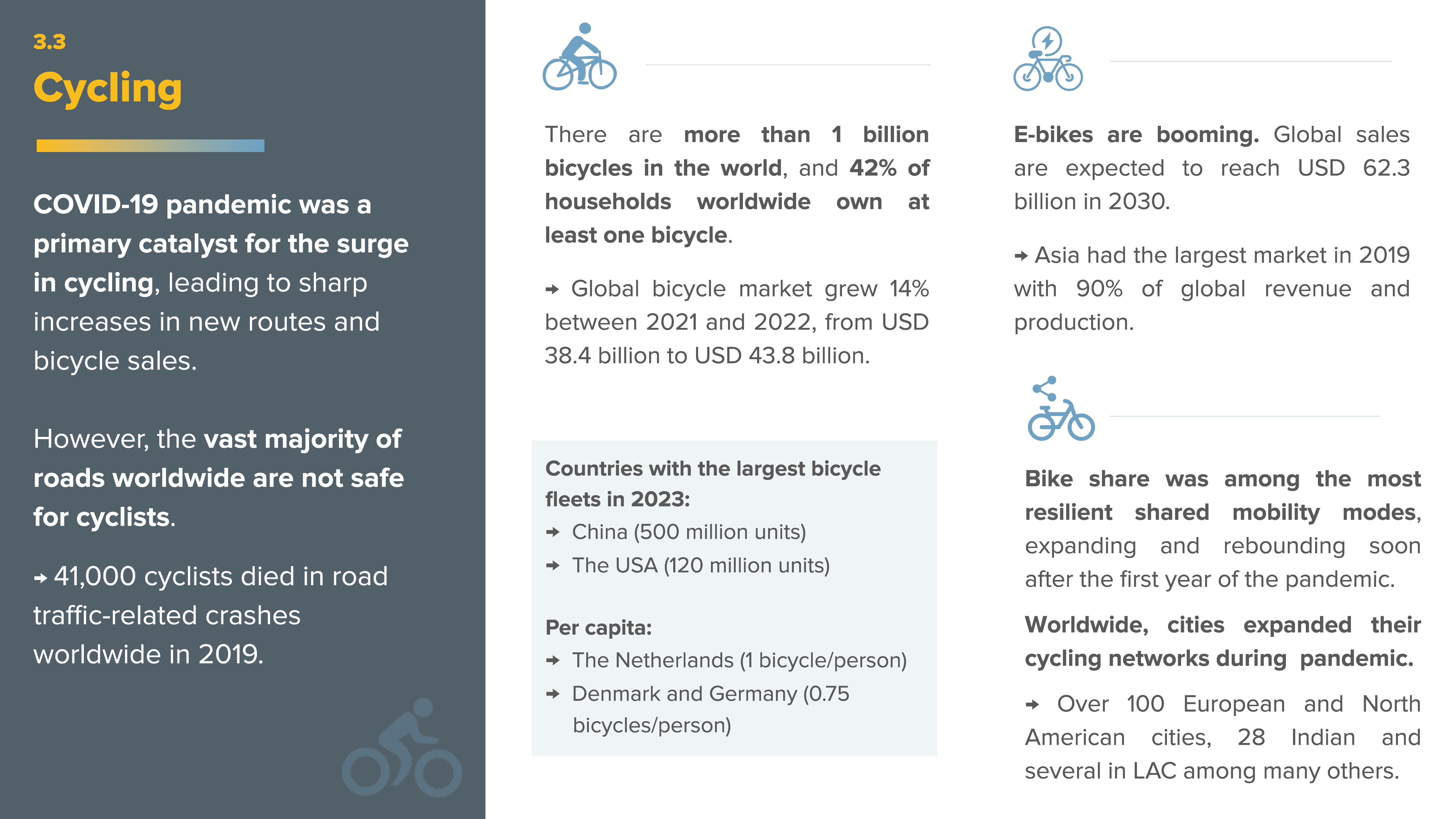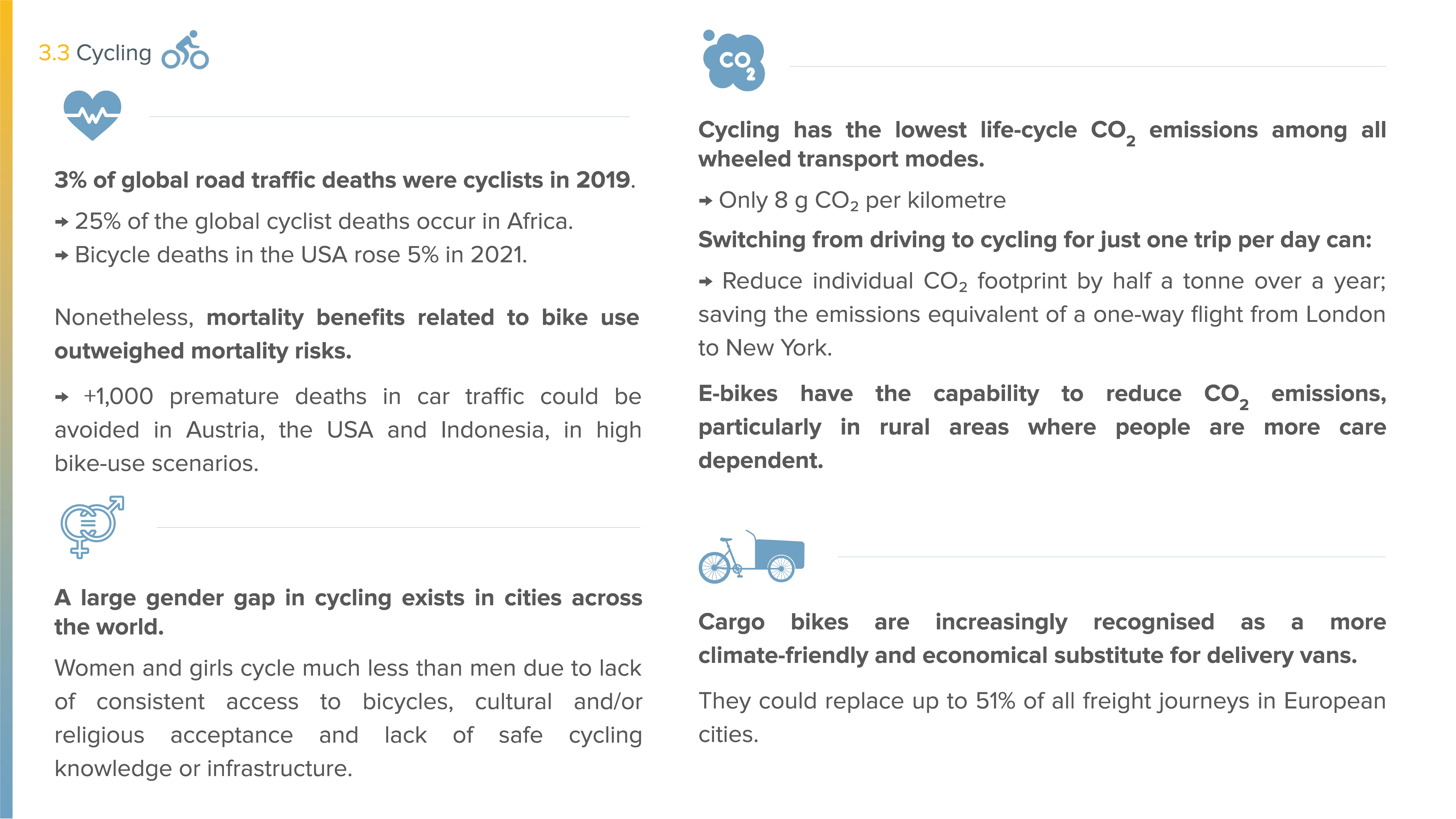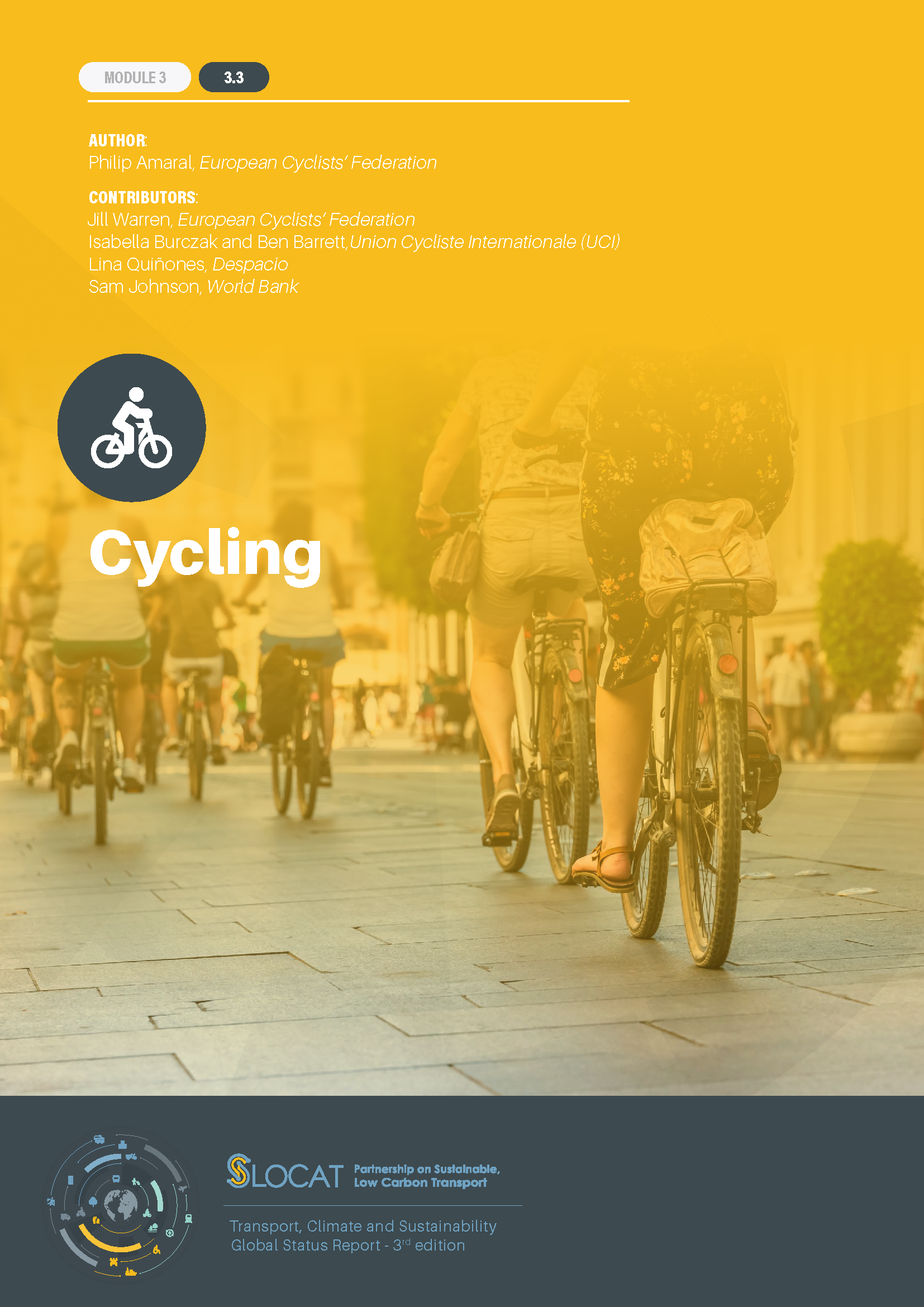-
Cycling
- Key Findings
Demand trends
- There are more than 1 billion bicycles in the world, and 42% of households worldwide own at least one bicycle, according to a 2015 study. The COVID-19 pandemic greatly influenced cycling trends, catalysing growth in both the number of people who cycle and sales of bicycles.
- The global bicycle market grew 14% between 2021 and 2022, from USD 38.4 billion to USD 43.8 billion.
- Global sales of electric bikes (e-bikes, including electric-assisted and electric moped bikes) have boomed since the start of the pandemic, in parallel to the growth in cycling.
- Bike share systems expanded during the pandemic and remained among the most resilient modes of shared mobility, rebounding after the first year of the pandemic.
- The share of cycling among transport modes has mostly remained the same across countries and cities worldwide in recent years.
- Analysis of distance-based ratios of cycling in selected countries and cities revealed that in the Netherlands, where the cycling modal share is very high, most trip distances are two kilometres or less, reflecting the density of Dutch cities and of urban cycling networks. Overall, most cycling across major world cities involves trips of five kilometres or less.
- People cycle more for trips between work and home than for other purposes. In urban areas, cycling to work is 40% more common on average than cycling for a non-work trip, with this share rising to around 60% in larger cities.
- Researchers have found mixed links between cycling and levels of education and income. The link between cycling levels and the cost of buying a bicycle is not clear, with some cyclists motivated by the affordability of cycling and others not.
- A large gender gap in cycling exists in cities across the world, with women and girls cycling much less than men for a variety of reasons, including lack of consistent access to bicycles, cultural and/or religious acceptance reasons, and lack of safe cycling knowledge or infrastructure.
- Cities that have the highest shares of cycling are also those that have a medium or high representation of women who cycle and a healthy mix of age demographic.
- Every year, an estimated 41,000 cyclists die in road traffic-related incidents worldwide, representing 3% of global road traffic deaths in 2019. A quarter of the global cyclist deaths occur in Africa. Bicycle deaths in the United States rose 5% in 2021.
Emission trends
- Cycling can lead to dramatic reductions in greenhouse gas emissions from transport. People who cycle daily emit an estimated 84% fewer carbon emissions from their daily travel than those who do not. Studies report that replacing a daily car journey with an e-bike can save an average of 249 grams of carbon dioxide (CO2) for every kilometre travelled.
- E-bikes have the capability to reduce per capita CO₂ emissions, especially in rural areas where people typically travel longer distances and are more car dependent.
- Cargo bikes are increasingly recognised globally as a more climate-friendly and economical substitute for delivery vans, for both small and large delivery companies.
Policy developments
- Leading barriers to cycling include being too close to car traffic, a lack of quality infrastructure, perceptions of poor physical fitness, and negative community perceptions of cyclists. Globally, a key enabler for a high cycling share is the presence of safe infrastructure.
- Countries that have implemented national cycling promotion strategies include Finland, Germany, Japan and the Netherlands.
- Many cities in Asia, Europe, Latin America and the Caribbean and North America expanded their cycling networks during the COVID-19 pandemic by adding new lanes and tracks as well as pop-up bicycle infrastructure, in response to the increased demand for cycling. More than 2,500 kilometres of temporary cycling infrastructure was added in Europe over this period, much of which is now permanent.
- In recent years, cycling policies have emerged as key measures for climate change adaptation and mitigation. Since 2018, when the United Nations declared June 3 as World Bicycle Day, several important developments have promoted cycling at the global and regional levels.
- As of March 2023, 31 (or 22%) of countries’ second-generation Nationally Determined Contributions (NDCs) towards reducing emissions under the Paris Agreement covered cycling or active mobility.
Author: Philip Amaral, European Cyclists’ Federation (ECF)
Contributors: Jill Warren, European Cyclists’ Federation (ECF); Isabella Burczak and Ben Barrett, Union Cycliste Internationale (UCI); Lina Quiñones, Despacio; Sam Johnson, World Bank



